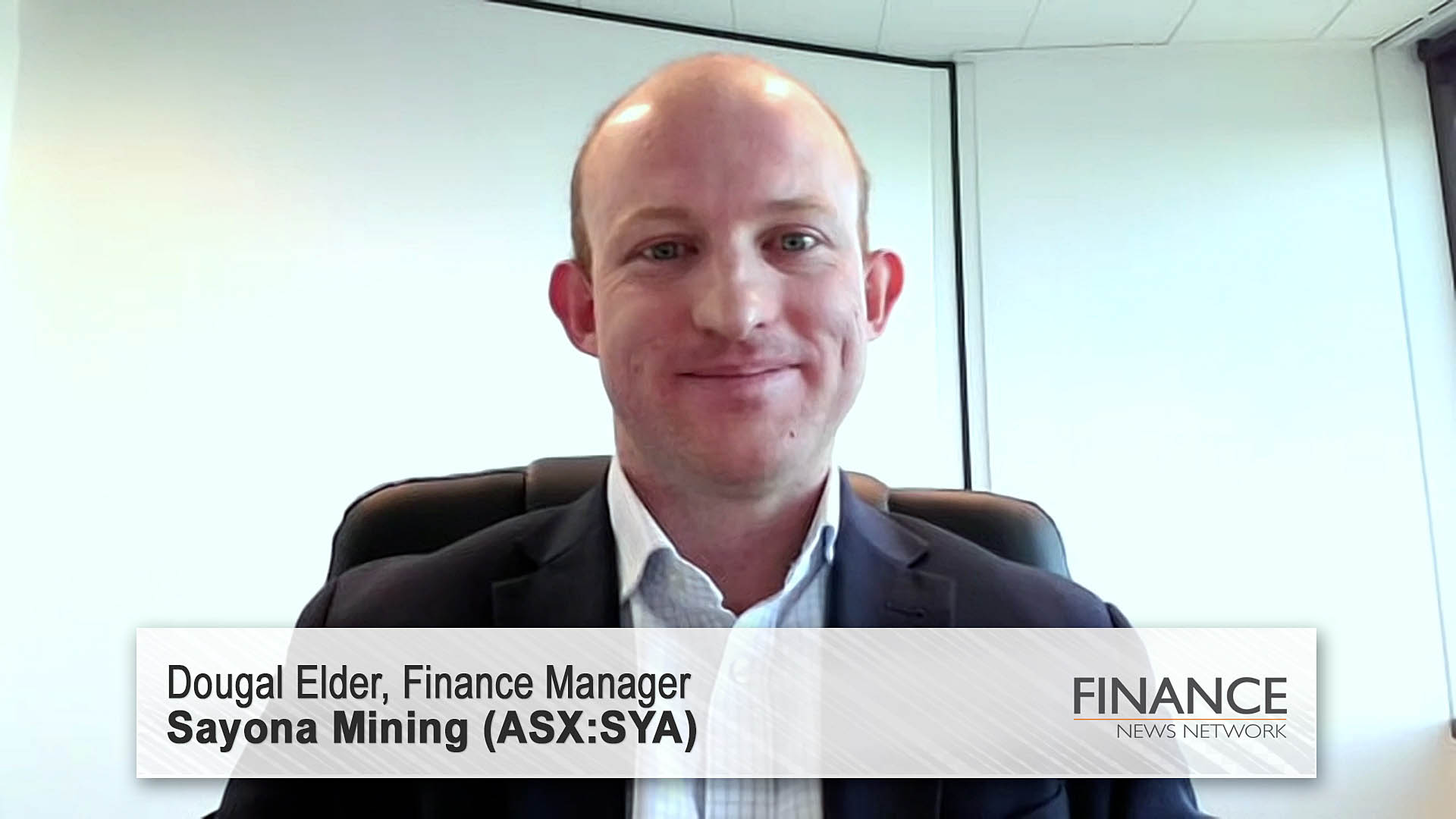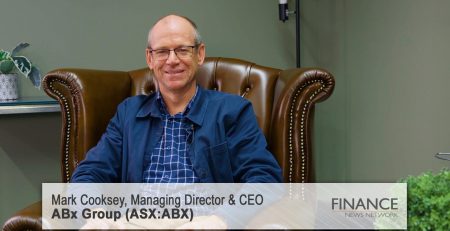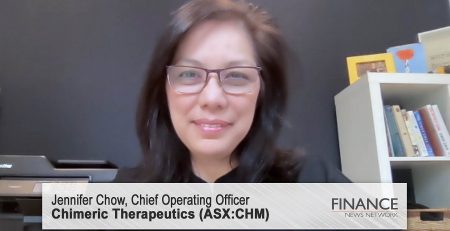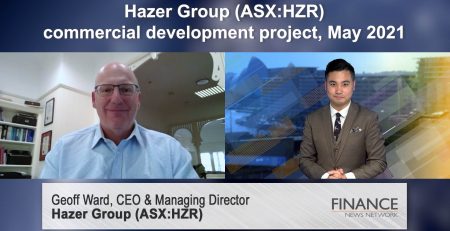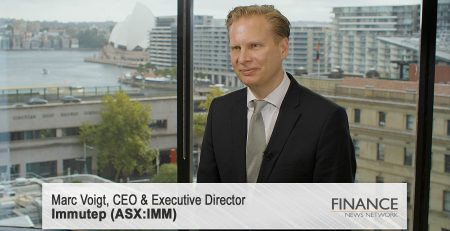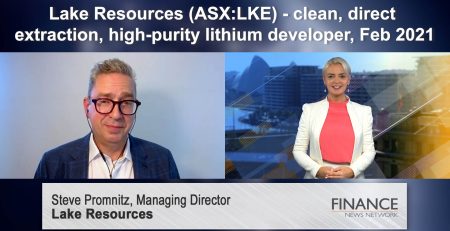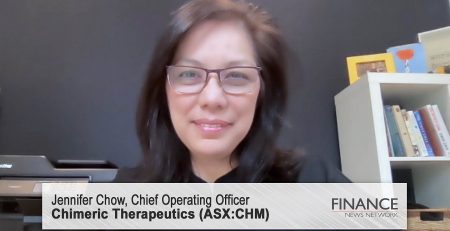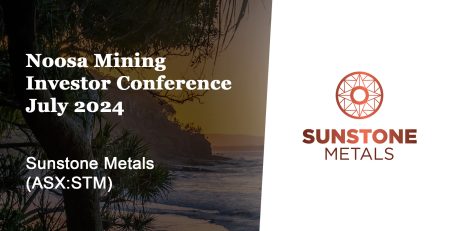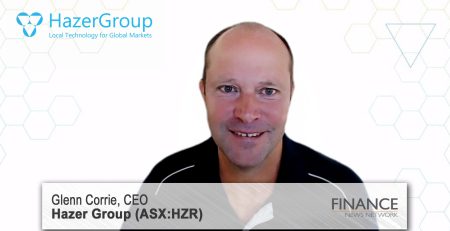Sayona’s vertically integrated NAL NPV now exceeds A$5bn
Sayona Mining Limited (ASX:SYA) Finance Manager Dougal Elder discusses key takeaways from the recent lithium carbonate study, improvement in operation total value, and steps to get to first production in 2026.
Paul Sanger: We're talking today with Sayona Mining (ASX:SYA), who is an emerging leader in the supply of lithium for North America's electrification. We welcome back Dougal Elder, who is the Finance Manager for the company. It's got an ASX code of "SYA", and a market cap of $1.8 billion. Dougal, Sayona has been a great success story in Canada. In 2021, it acquired the North American Lithium operation for around a hundred million. The operation previously had 400 million invested, including half-built lithium carbonate plants. In March this year, Sayona restarted production of lithium spodumene concentrate at NAL, having spent just a hundred million to bring it into production. Incredibly, this was achieved on time and on budget, an extremely rare achievement in the mining industry recently. In April 23, Sayona released a definitive feasibility study for NAL, valuing the operation at around 2.2 billion for the production of lithium spodumene concentrate. And today Sayona has released a study on a lithium carbonate production at NAL, which it valued on a standalone basis at 3.2 billion. Combined, there's a total value in NAL of more than 5 billion. Dougal, welcome. I have some questions for you.
Dougal Elder: Thanks for having us, Paul.
Paul Sanger: Firstly, what were the key takeaways from the lithium carbonate study?
Dougal Elder: Yes, thanks, Paul, and some very exciting news for Sayona and the Sayona Quebec joint venture this morning. We've released the results from the preliminary lithium carbonate study, which is equivalent to a PFS, and that shows very strong economics for pursuing a lithium chemical production at North American Lithium. On a standalone basis, the lithium carbonate plant is valued at an NPV of A$3.2 billion. And when you combine that to the North American lithium DFS that we released only eight weeks ago, NAL's combined value is now in excess of $5 billion. This is for a plant and a site that we purchased for $100 million only two years ago. So, significant value has been demonstrated for the combined NAL operation as we approach towards taking NAL downstream. And, in terms of this valuation, the $5 billion NPV combined number, on a standalone basis the carbonate plant is showing a pre-tax IRR of 60 per cent, and that is to produce 23,600 tonnes of battery-grade lithium carbonate per annum, targeting commissioning by the end of 2026. So, very strong economics and we're very excited about moving this forward.
Paul Sanger: Dougal, can you explain how the operation total value now exceeds $5 billion?
Dougal Elder: That's right. So, NAL comprises a brownfield mine and concentrator and partially constructed lithium carbonate plant. The mine and concentrator have been in production since March of this year and are currently ramping up to nameplate capacity by the end of October. That ramp up is going very, very well. In terms of how this study works, it works on a basis of the NAL concentrator providing feedstock to the lithium carbonate plant. It has been modelled at a production rate of 186,000 tonnes of spodumene concentrate, 6 per cent spodumene concentrate, as feedstock to the carbonate plant. That grade is higher than what NAL is currently producing, but we've demonstrated that NAL is able to produce 6 per cent standard. So, that's the feedstock to the carbonate plant, and basically the output from the carbonate plant will be 23,600 tonnes of battery-grade lithium carbonate per annum. We've assumed an average selling price of US$25,500 a tonne, with an all in sustaining cost on an integrated basis of US$8,600. So, significant margins there for NAL on a combined downstream operation to produce that 23,000 tonnes of lithium carbonate per annum.
This is all going to be achieved for a capital expenditure of C$555 billion, which is about US$415 million. So, that's roughly half the cost of a greenfield lithium hydroxide plant. So, significant opportunity here for NAL and the Sayona Quebec joint venture to capitalise on the existing infrastructure and assets that are in place as well as take advantage of the majority permitting that is in place when we acquired the lithium carbonate plant to propel NAL forward to be a downstream producer of lithium chemicals.
Paul Sanger: How developed were the refining assets when you acquired them, and what modifications and upgrades do you need to do to get the plant ready for lithium carbonate production?
Dougal Elder: That's right. So, when the Sayona Quebec joint venture purchased the North American lithium site from the government of Quebec two years ago, it included a partially constructed lithium carbonate plant. And we saw that as a significant opportunity to rapidly advance that plant towards production, given that those assets were partially constructed, had previously operated in batch mode and the majority of the permits were in place for the operation of that facility. The preliminary technical study, which has been completed by Hatch, really focused around derisking the flow sheet for the lithium carbonate plant, and there are two sections to that.
The hydrometallurgical section, which related to the crystalliser. So, the previous owners, when they were commissioning the lithium carbonate plant, operated the plant without a crystalliser. And that's something that we have and Hatch has focused on including in the flow sheet.
But the major focus of the work that has been done in this preliminary study is around the pyrometallurgical sections. So, things like adding a feed preheated section, a ball mill, a rotary calcine cooler, and an acid bake kiln to fully replace the existing acid reactor. So, substantial upgrades are required to the pyrometallurgical section of the flow sheet, and that's all in to bring NAL towards commissioning by the end of 2026 and really around derisking the flow sheet from what was in process under the previous ownership.
Paul Sanger: Dougal, Sayona now plans a definitive study for the lithium carbon carbonate NAL, eyeing first production in 2026. What are the necessary steps to get there?
Dougal Elder: So, based on the very promising results from the preliminary study, the joint venture has now agreed to move forward to a definitive technical study. So, that work will now kick off, being led again by Hatch and PricewaterhouseCoopers. We anticipate the results of that study being available in the first half of 2024. In parallel or subsequent to, we would look to start procuring long lead items subject to the outcomes of that definitive technical study as well as site preparation works for the expansion works that are required to the existing footprint of the carbonate plant that is at NAL today. So, there's a substantial amount of work that is required to not only upgrade but derisk the portion of the carbonate plant that was placed in care and maintenance in 2014. So, we look forward to the results of that definitive study early next year and continuing to advance towards a final investment decision towards completing the construction of the lithium carbonate plan at NAL.
Paul Sanger: The Quebec government is effectively Sayona's joint venture partner in Moblan. Are you expecting any help from Quebec or the federal authorities with funding for NAL, and also how do you plan to fund the $555 million of pre-production capex?
Dougal Elder: That's right. So, Sayona has a partnership with the government of Quebec in our growth project Moblan in the north of Quebec, but with NAL Sayona is in partnership with Piedmont Lithium (ASX:PLL). Sayona owns 75 per cent of the North American Lithium joint venture and Piedmont owns 25 per cent of the NAL joint venture. So, together the partners are looking to progress towards a definitive technical study towards making a decision to bring that plant into production targeting the end of 2026. In terms of funding, there's numerous options on the table. It's a very strong market for funding of critical minerals projects at the moment, and we've seen that through evidence recently of the government of Quebec through Investment Quebec investing 250 million into Nemaska, which is a lithium mine and lithium hydroxide plant, both in Quebec. And we've also seen the government of Quebec together with the federal Canadian government investing 25 per cent each towards the construction of a plant for General Motors and POSCO on the St Lawrence River in Quebec. So, there's certainly precedence for governments in North America to contribute funding towards the development of critical minerals infrastructure, and certainly we would believe that NAL is a suitable candidate for that. So, we'll obviously be progressing conversations around funding, but we look forward to continuing those discussions with the relevant authorities.
Paul Sanger: Dougal, in relation to this, what is the permitting situation at NAL, and how do you anticipate this proceeding?
Dougal Elder: When the joint venture acquired North American Lithium from the government in 2021, the lithium carbonate plant, which had only ever operated in batch mode — it encountered problems during commissioning in 2014 — it was actually permitted to a production rate of 20,000 tonnes per annum. And when we acquired the site, we actually acquired those permits as well. So, obviously because as a result of the preliminary study today, the targeted production rate is greater than 20,000 tonnes per annum. There'll be some additional federal permits that are required from the Ministry of Environment and also the Ministry of Natural Resources and also some local provincial permits in relation to the new infrastructure and expanded footprint at NAL that will be required to allow NAL to produce that higher production rate of lithium carbonate. But I think, importantly, some of the very key permits, such as the Department of Fisheries permits that we've received as a result of bringing NAL's concentrator back into production, doesn't need to be updated. So, there's just some small number of federal and provincial permits that need to be obtained due to the additional infrastructure and expanded footprint relating from the carbon and plant to produce a higher production rate than previously under previous owners. But, from our perspective, the site is majority permitted, which we think is a very good start.
Paul Sanger: There's been plenty of talk about Canadian lithium lately. Can you give us an update on your northern hub as well?
Dougal Elder: Yeah, so we've been drilling quite aggressively at Moblan, which sits in the James Bay region in the north of Quebec. To this date we've completed over 50 per cent of the 60,000m drill program that is underway for this year. We're starting to get drill results coming back in, and our geologists are starting to look at those results now, but certainly we are looking to rapidly complete that drill program, and that's been put on hold as a result of the wildfires in the north of Quebec, which has caused the evacuation of local areas and also camps. So, we've suspended drilling at this point in time, but we're over 50 per cent of the way done, and once we're able to move back into those areas, once we've been given permission by local authorities, we'll finish off that drilling, and we look forward to bringing an updated resource for Moblan to the market in the early part of next year in 2024.
We've also got feasibility studies underway for Moblan. We've completed a preliminary baseline study for the construction of a mine concentrator at Moblan. And what we've made the decision to do is actually to rapidly pursue a definitive feasibility study on Moblan. And there's two reasons for that. The first is the mineral resource that we released on 17 April this year was larger than we expected. And also our focus from a milestone perspective is to bring Moblan into production by the first half of 2027. So, by getting a DFS done by the end of this year really keeps us on track for that production milestone of commissioning Moblan by the first half of 2027. So, that's why we've taken the decision to move straight to a DFS to build on the work, the baseline studies that we've already completed, and we look forward to bringing the results from the DFS to market at the end of this year.
Paul Sanger: Dougal, Sayona expects to make its first shipment from NAL next month. How is it all proceeding?
Dougal Elder: Very well, Paul. So, the NAL ramp up is going very, very well. We're closing on having enough tonnes produced to fill the first boat, so we're on track for that first shipment in July. We have volumes of concentrate now moving from Val d'Or, which is near NAL, down to the port of Quebec purely by rail now, and that's been happening since the start of June. So, we have significant volumes now moving via rail. In terms of NAL's ramp up, it's performing very, very well and in line with our expectations. The grades are in the range that we expected. The iron is at the lower end of historical levels and trending down, which is evidence that the investment that we've made in NAL around optical ore sorters and magnetic separators is starting to deliver results.
And in terms of recoveries, we've seen step changes over the months of recoveries, and this month to date we've been seeing about a 65 per cent recovery.
In terms of production, we've actually had some quite good news in June. NAL actually achieved a production record this month of well over 600 tonnes per day at a grade of 5.7 per cent. So, the fact that NAL has delivered in excess of nameplate capacity on a couple of days this month certainly shows that the ramp up is heading in the right direction, and we look forward to that first shipment in July of this year.
Paul Sanger: Dougal, finally, looking ahead, what are the key milestones for the rest of calendar 2023?
Dougal Elder: Thanks, Paul. Yes, well, obviously a very exciting announcement today in relation to the preliminary technical study for lithium carbonate production at NAL, but we still have more news flow to come. Obviously, with the first shipment of concentrate in July of this year, we need a second customer for that shipment, and we are going through the final board approvals now for an offtake agreement. So, we hope to have news on that in the next couple of weeks. We also look forward to the definitive feasibility study for Moblan later this year, which will be for the construction of a mine and concentrator. And that's really around aggressively pursuing the commissioning start date for Moblan by the first half of 2027. We also have the definitive technical study for the lithium carbonate plant. That work will be undertaken through the second half of this year, and we look forward to those results in the first half of next year.
So, still lots of news flow to come from Sayona this year, and we look forward to continuing to build our two lithium hubs in the north and south of Quebec to feed the growing demand from North America's decarbonisation transition.
Paul Sanger: Dougal Elder, it's been an absolute pleasure having you on today. Thank you very much for your time.
Dougal Elder: Thanks so much for having us, Paul.
Ends
Copyright 2023 – Finance News Network
Source: Finance News Network

